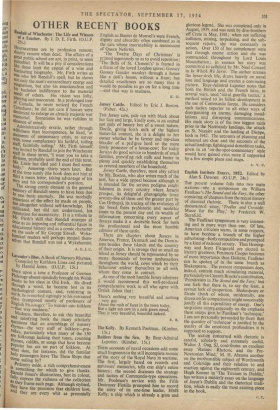THESE accounts of naval occasions add some small fragments to
the still incomplete mosaic of the story of the Royal Navy in wartime. The first, largely based on records and survivors' memories, tells one ship's entire history; the second discusses the strategy and tactics of Commando-type operations. Mr. Poohnan's service with the Fifth Destroyer Flotilla prompted him to record the story of its one-time leader, HMS Kelly, a ship which is already a grim and glorious legend. She was completed only in August, 1939, and was sunk by dive-bombers off Crete in May, 1941; when not suffering collision, mining, torpedoing, and the sub- sequent repairs, she was constantly in action. Over 150 of her complement were lost through enemy action and she was commanded throughout by Lord Louis Mountbatten; in essence her story was committed to celluloid by Mr. Noel Coward in In Which. We Serve. The author stresses the lower-deck life, draws heavily on naval lore and language and creates a convincing picture. Rear-Admiral Lepoticr notes that both the British and the French have, in several wars, used 'naval guerilla tactics,' a method raised to its fullest development in the use of Commando forces. He considers such tactics superior to all other ways of disorganising an enemy, damaging instal- lations and disrupting communications. His main story is of the two biggest raids prior to the Normandy landings, the attack on St. Nazaire and the landing at Dieppe, both in 1942. The accounts of planning and rehearsal arc clear and the accounts of the actual landings, fighting and demolition tasks, given in an 'on-the-spot-commentary' style would have gained even more if supported by a few simple plans and maps.


































 Previous page
Previous page